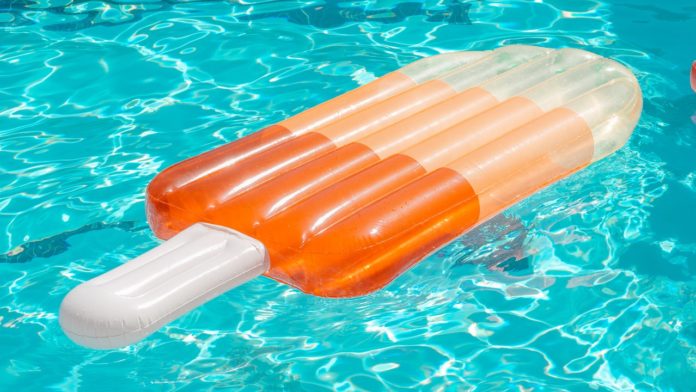There is nothing more refreshing than jumping into a swimming pool when the weather is hot and the summer sun is blazing. That said, if your pool isn’t in good health and is looking a bit worse for wear it is the last place you want to be. If you are one of the lucky ones and have a pool in your garden keeping it in prime condition and summer ready is a must. Otherwise, what is the point? So here are some top tips to get your swimming pool ready for summer after a winter of disregard.
Clean it
Even if your pool has been kept securely covered all winter it will still need a good and thorough clean. You will need to remove all the leaves and debris that has gathered both on the surface and on the floor of the pool. You can do this with a net or pool vacuum cleaner. You should also clean both sides of your pool cover to ensure no residual dirt or limescale remains and seeps back into your clean pool. It is also a good idea to clean the ladders, steps, and walls of your pool. If this is overwhelming or you just don’t have time, it’s worth looking into professional services like pool cleaning service ormond beach.
Check the filtration system
You will need to check that your filtration system is in good working order before diving in. The filtration system will help to filter out dirt, debris and grime from the water and in turn help protect your skin and cleanliness of the pool. Before you use your pool ensure that you have run your pool filter for at least 12 hours. After this ensure that your filtration system continues to run for at least 8 to 12 hours a day. You will also need to make sure that you rinse and clean the collection filters regularly and ensure that there are no blockages in the filter or inlet systems.
Check the water
Getting the chemical balance of your swimming pool right is an essential part of having a pool. It ensures that the water is hygienic and safe to use so you should always test the pool water before using it.
When you test your pool water you will need to test the PH level and the chlorine levels. The ideal range for the PH levels should be between 7.2-7.6. If the PH is too high it could prevent the chlorine from working properly, cause skin irritation and cloudiness in the water. If the PH is too low it could cause damage to the pool, the mechanical components, and cause irritation to the eyes.
When determining the correct amount of chemicals to use to ensure the correct metrics you will have to calculate it based on the size and water volume of your pool. Here is a great tool to help you determine how to get your water levels ready and safe for summer.
Even when your water levels are reading within the safe zone it is still advised that you wait for your water to become clear. Give the water and the chemicals some time to do what they need to do to ensure the water is safe to use. If your chemical levels are reading correctly, the water is crystal clear, and you can see the bottom then your pool is ready to use.
The surrounding areas
It is not just your pool that will need to be ready for summer but the surrounding areas and your entire garden also. You will want to ensure that the pool area is clean and safe for use after the winter. Tidy up and debris and dirt lying around as this will only end up in your pool. Ensure that the area is safe and slip resistant, if you have decking around your pool consider whether it needs to be repainted or re-protected. Using a sealer such as Seal-Once Marine is a great way to protect your decking and make it slip resistant. Alternatively if you have a concrete or tiled area around your pool ensure that it is free from cracks and damage that could cause slips, trips or injuries when using the pool.
Make it fun
Finally, once you have taken care of all of the practicalities turn your attention to how you are going to enjoy your pool this summer. Stock up on bright pink flamingo floats, inflatable chairs, sinkers and pool toys to ensure that you get the most fun out of your swimming pool.


